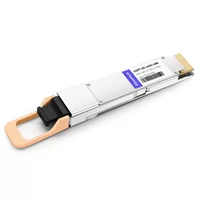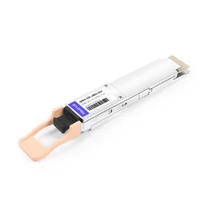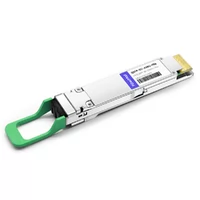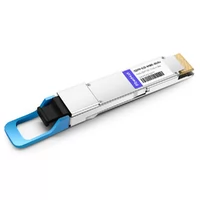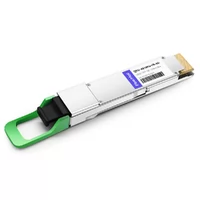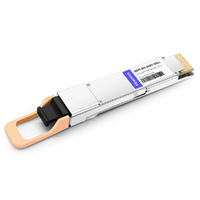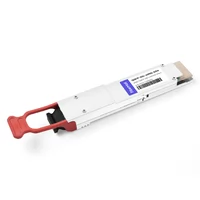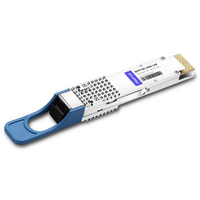The QSFP-DD 400G optical module has become a key element in the fast-changing field of data transmission technology to improve network performance and capacity. This article will examine various aspects of these modules, including their design, how they work with other systems, what they do, and where they can be used. Industries are increasingly demanding higher bandwidths and lower latencies, which makes it necessary for professionals working in such areas to understand how these devices function to enhance their networking setups. At the end of this write-up, readers will have an idea about what QSFP-DD 400G technology is capable of and its benefits, allowing them to make wise decisions when investing in tech products.
Table of Contents
ToggleWhat is a QSFP-DD 400G Optical Module?
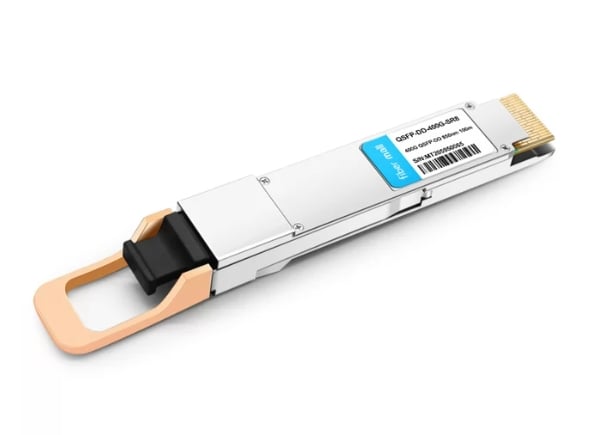
Understanding the QSFP-DD Form Factor
The QSFP-DD (Quad Small Form-factor Pluggable Double Density) is a powerful optical transceiver form factor that supports up to 400G data rates. The existing QSFP form factor has been modified by adding more electrical contacts, thus allowing it to double its density. The QSFP-DD contains eight transmission channels and eight reception channels, which enable higher data throughput in a small-sized package. This particular form factor can work with the current infrastructure of QSFP, making upgrades easy and taking less space in data centers simultaneously. Its robust build guarantees consistent performance under different conditions while ensuring good heat control. This feature makes it very vital for high-speed networking applications nowadays.
Features of 400G QSFP-DD Modules
The 400G QSFP-DD modules have several important features that increase their performance and efficiency. For starters, they can be used with different protocols like Ethernet and InfiniBand, making them suitable for various network settings. Another feature is the low power consumption of these modules, which ranges between 3.5 to 4.5 watts, hence promoting energy conservation in data centers; this aspect is vital for the operation of 400G LR4 applications. Also included are sophisticated digital diagnostics functions that allow real-time monitoring of parameters such as temperature, voltage or current thus facilitating proactive management and maintenance of networks. Moreover, both single-mode fibers (SMF) and multi-mode fibers (MMF) can be supported by these QSFP-DDS, providing a variety in terms of distance covered during transmission from short-range connections all through to long-haul ones . Last but not least, the important fact about this hot-swappable design is it simplifies installation as well as replacement without interrupting any ongoing processes, thereby boosting overall reliability within the system.
Benefits of Using 400G Optical Modules
400G optical modules have many advantages for data centers and high-performance networking environments. First, these modules provide much more bandwidth capacity which allows for faster data transfer rates that meet the growing demand for high-speed connectivity. This scalability is crucial in cloud computing, big data analytics, and high-frequency trading applications where quick access to information is needed.
Besides performance improvement, 400G optical modules enhance cost efficiency by minimizing necessary connections as well as infrastructure costs, especially in terms of reach over SMF optical communication. Their low power consumption reduces operational expenses and contributes to sustainability through decreased energy use and carbon emissions. Additionally, advanced diagnostics, along with monitoring features, promote preventive maintenance, thereby reducing downtime and ensuring optimal network performance. These benefits indicate that investing in 400G optical modules should be considered essential when preparing networks for future demands.
How Does a QSFP-DD Optical Transceiver Work?
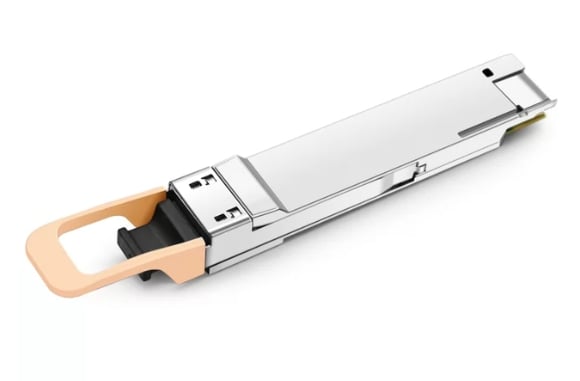
Basics of Optical Communication
Optical communication refers to the transmission of information through light waves, usually through optical fibers. It works by changing electrical signals into optical signals using a transmitter, which then sends these signals down the fiber optic cable. At the receiving end, a photodetector converts them back into an electric signal again. This process allows high-speed data transfer with low losses and interference, making it an essential technology for modern telecommunication systems. Wavelength division multiplexing (WDM), among other things, can be used to increase capacity significantly because different wavelengths can be used to carry several streams of data at once over one single fiber.
PAM4 and Higher Data Rates
Pulse Amplitude Modulation 4-Level (PAM4) is an encoding technique that increases data transmission capacity by using two bits of information instead of the usual binary. It doubles the speed of data transfer without needing extra bandwidth, which makes it very useful for optical modules working at 400G. PAM4 uses proper handling signal integrity and minimizing noise to support effective long distance transfer. With networks continuously demanding more data, integrating PAM4 in optical transceivers will be vital in realizing higher speeds with a guarantee on performance and reliability.
Role of LC Connectors and SMF
Lucent Connectors (LC) are small and high-density connectors used in fiber optic communication systems. Their compactness increases the number of ports that can fit in a given space, thus making them ideal for data centers and telecommunication facilities where space is at a premium. LC connectors use a latch mechanism that ensures they are secure but easy to access while minimizing the chances of accidental disconnection.
Single-mode fiber is an optical module that carries light directly down the fiber with minimal modal dispersion, allowing long-distance communication. With a core diameter between 8-10 microns, SMF can efficiently transmit only one light mode. This enables it to achieve higher bandwidth over greater distances than multimode fibers. In modern optical networks, it is essential to combine LC connectors with SMF because this supports high-speed data transmission over vast areas without compromising signal integrity or performance.
What are the Types of 400G QSFP-DD Optical Modules?
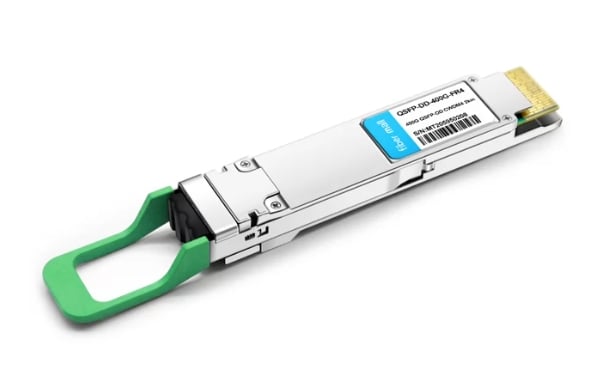
Overview of LR4 Optical Transceivers
LR4 optical transceivers, also known as Long Range 4-channel transceivers, are engineered for high-speed data transmission over single-mode fiber (SMF), with a maximum range of 10 kilometers. Operating at a wavelength of 1310 nm, LR4 modules use four wavelengths transmitting 25 Gbps each to achieve an aggregate data rate of 100 Gbps. This is especially beneficial in data centers and enterprise networks because it provides a good balance between performance and distance while keeping latency low and reliability high. In addition, LR4 transceivers meet the IEEE 802.3bm standard which ensures their compatibility with current networking infrastructure. The compact package design allows easy integration into QSFP-DD (Quad Small Form-factor Pluggable Double Density) form factors for space-efficient rack mounting in energy-efficient racks.
Understanding DR4 and FR4 Modules
DR4 optical transceivers (Dense Wavelength Division Multiplexing for 400G) are made for short to medium-range uses, usually over multimode fiber (MMF) and up to a distance of 500 meters. With a wavelength of 850 nm, DR4 transceivers employ four independent optical channels, with each channel capable of 25 Gbps, leading to an overall throughput of 100 Gbps. They are, therefore, suitable for data center applications that require high bandwidth over short distances.
On the other hand, less demanding environments may prefer the use of 100G modules instead. The FR4 optical transceiver is designed for longer ranges and can support up to two kilometers worth of data sent via single-mode fiber (SMF). As DR4s do, FR4s work through four different channels where each one contributes its own share towards a total combined rate equal to one hundred gigabits per second. Operating at wavelengths around 1310 nm makes them ideal interconnectors between different data centers located within metropolitan areas or even buildings within the same city, thus providing powerful solutions required by service providers who want quality, stable connections across large distances. Both module types aim to meet modern communication networks’ need for faster transmission rates, which keep increasing continuously over time.
Introduction to SR8 Optical Modules
The SR8 optical module is engineered to cater to high-speed data transfer in the data center. It achieves this using eight lanes of 100 Gbps through MMF supporting 800G Ethernet applications, which gives an aggregate throughput of 800 Gbps. However, single-mode fiber (SMF) is commonly used for 400G DR4 connections. The transceivers operate at a wavelength of 850 nm and employ advanced signal modulation techniques that facilitate efficient data transmission on OM4 multimode fiber across distances up to 300 meters and OM5 multimode fibers over as far as 400 meters.
These modules are very useful when interconnecting large-scale data centers since they require strong and trustworthy communication solutions for bandwidth-hungry workloads. Since the SR8 form factor operates in either QSFP-DD or OSFP configurations, it can be easily deployed within existing infrastructures while maximizing space utilization, energy efficiency, high-performance levels, and minimal latency.
How Do You Install and Configure QSFP-DD Optical Transceivers?
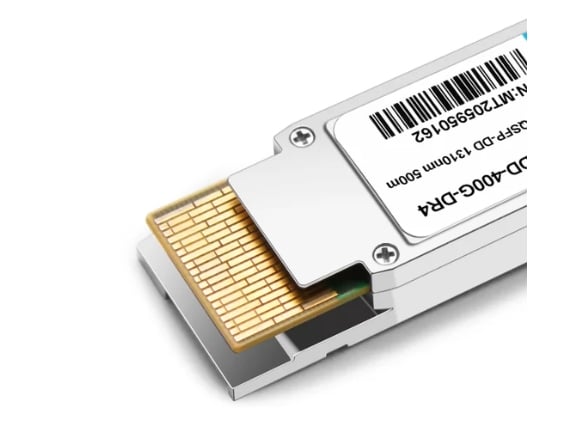
Step-by-Step Installation Guide
- Gathering Equipment: Make sure you have the QSFP-DD transceiver, appropriate multi-mode or single-mode fiber cables, and tools such as static wrist straps and cable management devices.
- Switch Off the Device: To avoid electrical damage or data loss, it is important to power down the switch or router where the 400G Ethernet optical module will be installed.
- Remove Existing Modules (if required): If a current transceiver is in place, carefully unseat it by squeezing the ejector tabs on either side before gently sliding it out.
- Verify Compatibility with 400G LR4 Modules for Optimal Performance: Verify the compatibility of QSFP-DD modules to ensure that your hardware platform supports desired data rates and distance requirements.
- Insert QSFP-DD Module: The module should be aligned with the slot and gently pressed into position until its ejector tabs click back to locked positions, securing the transceiver.
- Connect Optical Cables: Appropriate fiber optic cables are attached to ports of transceivers, ensuring firm connections while following correct polarity.
- Power Up Equipment: After everything has been securely connected, turn on the switch/router so that the system can recognize the newly installed transceiver.
- Check Installation Status: By checking signal strength and error rates via the device management interface, you can confirm whether or not your QSFP-DD optical transceiver is detected and functioning properly. Ensure eight channels are accurately converted by module.
- Cable Management: To prevent strain on connections and maintain efficient airflow within data centers, organize and secure cables.
This systematic approach will help ensure a successful installation of QSFP-DD transceivers facilitating high-performance communication within the networking infrastructure.
Configuration Tips and Best Practices
- Use the Correct Module Settings: It is essential to set up the transceiver correctly according to your network environment. This involves checking that the data rate and modulation format are in line with the network’s requirements for optimal performance.
- Implement Network Monitoring Tools: Use monitoring solutions to constantly monitor how well QSFP-DD transceivers are functioning. Simple Network Management Protocol (SNMP) tools can give you information on link status, signal quality, and possible problems.
- Regular Firmware Updates: Especially for 400G LR4 applications, keep the firmware of the transceiver and related networking equipment updated regularly. Frequent updates may improve stability, introduce new features, or enhance compatibility with other components within a network.
- Conduct Weekly Performance Assessments: Set up regular checks on optical transceiver performance. By watching out for things such as bit error rates (BER) or link latency, you will be able to detect potential issues before they affect reliability across networks hence ensuring peak operation for 400G DR4 modules.
- Ensure Adequate Cooling: During use, QSFP-DD modules produce heat. Therefore, it is important to maintain proper air circulation around these devices and adequate cooling systems within data centers so that they do not become too hot.
These best practices should be followed to improve the performance and reliability of your QSFP-DD transceivers, ensuring efficient communication across your networking infrastructure, especially in SMF optical communication applications.
Common Troubleshooting Steps
- Establish Physical Connections: Verify that all fiber optic cables and connectors are appropriately seated and free from damage. Loose or damaged connections can cause signal degradation or complete loss of connectivity.
- Check Transceiver Compatibility: Check if the installed QSFP-DD transceivers work with both the network equipment and specific network configurations. For compatibility information, refer to the manufacturer’s specifications.
- Examine Diagnostic Indicators: The built-in diagnostic indicators on the transceiver modules should be used. LED status lights give immediate information about the operational state and help identify potential faults, such as power issues or link failures.
These troubleshooting steps allow efficient diagnosis of QSFP-DD transceiver performance and connectivity problems by network administrators.
What are the Applications and Use Cases for 400G QSFP-DD Modules?
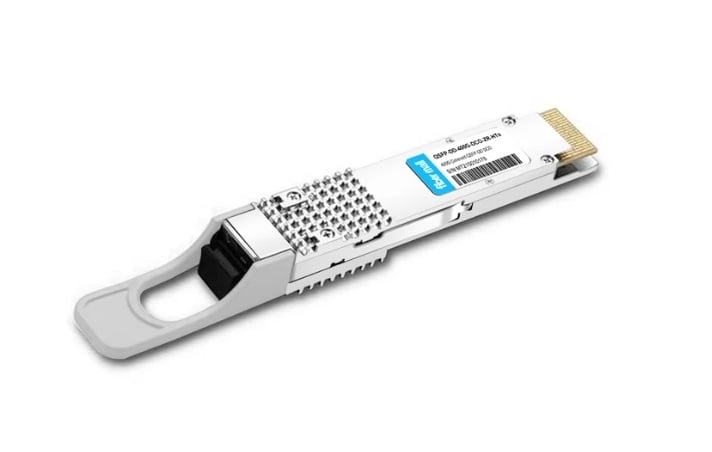
Use in Data Centers and Enterprise Networks
400G QSFP-DD modules are vital for modern data centers and enterprise networks due to their capability to support high data rates with energy efficiency. They can also be used in optical communications using single-mode fiber (SMF). High-bandwidth applications such as cloud computing, big data analytics, and real-time processing that involve huge amounts of data can only be made possible by these modules.
In the data center environment, 400G QSFP-DD modules allow for dense networking architectures which improve overall network throughput. This means that they facilitate faster interconnects between servers and switches making it important to meet the increasing demand for high-speed connectivity caused by virtualized workloads and enhanced digital services. Also, the integration of QSFP DD modules helps reduce power consumption while optimizing space utilization, thereby contributing towards cost-effective operations.
Similarly, enterprises gain from deploying 400G QSFP DD modules within their networks. These devices enable businesses to future-proof their infrastructure, enabling seamless upgrades required by emerging technologies like AI or IoT. Application performance can be improved through the deployment of high-speed links, thus ensuring robust connectivity for users both on-premises and in hybrid cloud environments. In general, therefore, the use of such equipment is crucial in maintaining a competitive edge through scalability and better network performance.
Scaling for Single-Mode and Multi-Mode Environments
To scale a network over single-mode and multi-mode environments, it’s important to know the features and uses of each fiber type. Single-mode fibers have small core diameters, which minimize signal loss and dispersion, allowing them to support longer distances with higher bandwidth. Due to this property, they are suitable for telecommunications that span long distances as well as huge data centers where long reach and high-speed transmission are necessary. On the other hand, multi-mode fibers have wider core diameters, which allow different light modes to propagate in parallel, thus making them ideal for shorter ranges such as those found within buildings or campuses.
Organizations usually use single-mode when deploying 400G QSFP-DD modules because it connects data centers situated far apart while ensuring maximum performance under high-bandwidth conditions. However, multi-mode fibers are more often used in Local Area Networks (LANs) since they can link devices at close range while being cheaper and easier to install. Therefore effective network design requires that one understands the specific needs of each type of fiber; this helps businesses build scalable infrastructures capable of adapting to changing requirements over time.
Future Trends in Optical Module Technology
The rapidly changing landscape of optical module technology is driven by the need for higher data rates and better network efficiency. This includes 800G modules and beyond, which are seen as a means to handle more bandwidth while meeting the ever-growing demands from hyperscale data centers or 5G networks. Silicon photonics also plays an important role in this process by allowing smaller, less power-hungry devices that combine light-based electronics with traditional circuitry on one chip. Then we have intelligent optical networking that creates smart modules with advanced monitoring capabilities enabling real-time performance analysis and management functions. Finally, AI/ML integration will allow dynamic resource allocation and predictive maintenance for optimal preemptive network operations by service providers. Companies must keep up with these trends if they want to stay competitive in telecommunications as it evolves quickly around them into new shapes all the time now.
Reference Sources
Frequently Asked Questions (FAQs)
Q: What does 400G QSFP-DD Optical Module mean?
A: A 400G QSFP-DD optical module is a high-speed optical transceiver module designed to support 400 gigabit ethernet (400G Ethernet) and other high-speed optical communication applications. The term “QSFP-DD” refers to its ability to double the density of network ports in small form factor pluggable devices, typically used for single-mode fiber communications.
Q: What makes the 400G QSFP-DD FR4 different from other modules?
A: The 400G QSFP-DD FR4 is an optical transceiver that provides a 2 km reach with CWDM technology over duplex LC connectors. This module stands out because it uses four channels of parallel optics instead of just one, as many others do.
Q: How does the DR4 differ from the FR4 regarding 400gqsfp-dd?
A: The DR4 operates over a shorter distance, up to 500 meters, and has eight channels compared to two kilometers and four channels for its counterpart. It can be used as a data center interconnect at higher speeds than usual, where both are connected using single-mode fibers (SMF).
Q: When should I use a 400gqsfpddsr8 module?
A: A good example would be when you need something short-range within data centers that can go no more than one hundred meters across multimode fiber (MMF). Due to their low latency characteristics, high-performance computing clusters often rely heavily upon these modules.
Q: Can you describe typical use cases involving this type of transceiver called “LR”?
A: Well, they’re primarily seen in long-haul setups such as regional metro networks operating over SMF up until ten kilometers apart.
Q: Can you describe what a 400G QSFP-DD LR8 transceiver is?
A: The 400G QSFP-DD LR8 transceiver is an optical transceiver module that supports long-distance optical communication over single-mode fiber (SMF) for distances up to 10 kilometers. It generally employs CWDM technology and allows for eight channels of parallel optical communication.
Q: What are the characteristics of the 400G QSFP-DD ER8 module?
A: The 400G QSFP-DD ER8 module is made for extended-reach applications and can support up to forty kilometers over SMF. It uses eight channels and is best suited for telecom and long-haul data communications.
Q: What does a BiDi QSFPDD module do?
A: A BiDi QSFP-DD (Bidirectional) module converts optical signals to allow bidirectional data transmission on one fiber. These modules typically use Wavelength Division Multiplexing (WDM) technology to transmit multiple wavelengths in opposite directions within one fiber, thus maximizing network infrastructure.
Q: How does the standardization of the QSFP DD MSA help with interoperability between different transceivers?
A: The multi-source agreement (MSA) standard among manufacturers like Cisco or Juniper guarantees compatibility among their respective modules. It also simplifies integration by providing standardized mechanical, electrical, optical, and thermal interfaces across all devices that utilize this type of transceiver – making it easier to work with various systems.
Q: Why should we care about modern data centers using 400G ethernet?
A: Modern data centers need high-speed ethernet connections like “Four Hundred Giga-bit Ethernet,” which reduce latency times while improving overall performance because they greatly increase transfer rates. Furthermore, QSFP DD LR4 modules commonly support these faster speeds, which address higher bandwidth demands due to the proliferation of cloud services and IoT devices.
Related Products:
-
 QSFP-DD-400G-SR8 400G QSFP-DD SR8 PAM4 850nm 100m MTP/MPO OM3 FEC Optical Transceiver Module
$149.00
QSFP-DD-400G-SR8 400G QSFP-DD SR8 PAM4 850nm 100m MTP/MPO OM3 FEC Optical Transceiver Module
$149.00
-
 QSFP-DD-400G-DR4 400G QSFP-DD DR4 PAM4 1310nm 500m MTP/MPO SMF FEC Optical Transceiver Module
$400.00
QSFP-DD-400G-DR4 400G QSFP-DD DR4 PAM4 1310nm 500m MTP/MPO SMF FEC Optical Transceiver Module
$400.00
-
 QSFP-DD-400G-SR4 QSFP-DD 400G SR4 PAM4 850nm 100m MTP/MPO-12 OM4 FEC Optical Transceiver Module
$450.00
QSFP-DD-400G-SR4 QSFP-DD 400G SR4 PAM4 850nm 100m MTP/MPO-12 OM4 FEC Optical Transceiver Module
$450.00
-
 QSFP-DD-400G-FR4 400G QSFP-DD FR4 PAM4 CWDM4 2km LC SMF FEC Optical Transceiver Module
$500.00
QSFP-DD-400G-FR4 400G QSFP-DD FR4 PAM4 CWDM4 2km LC SMF FEC Optical Transceiver Module
$500.00
-
 QSFP-DD-400G-XDR4 400G QSFP-DD XDR4 PAM4 1310nm 2km MTP/MPO-12 SMF FEC Optical Transceiver Module
$580.00
QSFP-DD-400G-XDR4 400G QSFP-DD XDR4 PAM4 1310nm 2km MTP/MPO-12 SMF FEC Optical Transceiver Module
$580.00
-
 QSFP-DD-400G-LR4 400G QSFP-DD LR4 PAM4 CWDM4 10km LC SMF FEC Optical Transceiver Module
$600.00
QSFP-DD-400G-LR4 400G QSFP-DD LR4 PAM4 CWDM4 10km LC SMF FEC Optical Transceiver Module
$600.00
-
 QDD-4X100G-FR-Si QSFP-DD 4 x100G FR PAM4 1310nm 2km MTP/MPO-12 SMF FEC CMIS3.0 Silicon photonics Optical Transceiver Module
$650.00
QDD-4X100G-FR-Si QSFP-DD 4 x100G FR PAM4 1310nm 2km MTP/MPO-12 SMF FEC CMIS3.0 Silicon photonics Optical Transceiver Module
$650.00
-
 QSFP-DD-400G-SR4.2 400Gb/s QSFP-DD SR4 BiDi PAM4 850nm/910nm 100m/150m OM4/OM5 MMF MPO-12 FEC Optical Transceiver Module
$900.00
QSFP-DD-400G-SR4.2 400Gb/s QSFP-DD SR4 BiDi PAM4 850nm/910nm 100m/150m OM4/OM5 MMF MPO-12 FEC Optical Transceiver Module
$900.00
-
 QSFP-DD-400G-ER4 400G QSFP-DD ER4 PAM4 LWDM4 40km LC SMF without FEC Optical Transceiver Module
$3500.00
QSFP-DD-400G-ER4 400G QSFP-DD ER4 PAM4 LWDM4 40km LC SMF without FEC Optical Transceiver Module
$3500.00
-
 QSFP-DD-400G-LR8 400G QSFP-DD LR8 PAM4 LWDM8 10km LC SMF FEC Optical Transceiver Module
$2500.00
QSFP-DD-400G-LR8 400G QSFP-DD LR8 PAM4 LWDM8 10km LC SMF FEC Optical Transceiver Module
$2500.00

